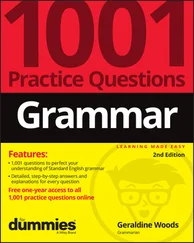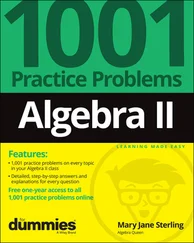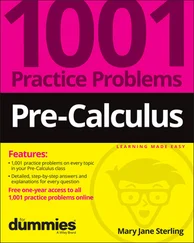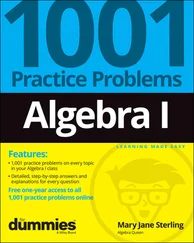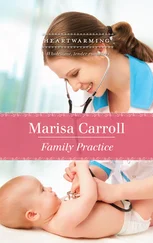1 ...6 7 8 10 11 12 ...18 Medical/physical health involves the complex interplay of neurobiology, physiology, body systems theory, functional capacity, and diagnostic and clinical categories as defined by acceptable standards of practice and treatment by medical health experts. Medical/physical health uses a disease model that is detectable and observable by observation, description, and evaluative technology to establish a medically determinable impairment, disease, or disability.
Theoretical Assumptions of the PRRC Model
The PRRC helps mental and behavioral health professionals evaluate a variety of mental, behavioral, and psychosocial health risk and resiliency factors related to pandemic viruses. The PRRC model is divided into two separate models—risk and resiliency—each assessed on a 5-point scale. The five-level scales of risk and resiliency assess four categories: mental, behavioral, psychosocial, and medical/physical health. The five levels of resiliency and risk are as follows:
| Resiliency Scale |
Risk Scale |
| 5 = Excellent Resiliency |
1 = Low Risk |
| 4 = Very Good Resiliency |
2 = Mild/Slight Risk |
| 3 = Good Resiliency |
3 = Moderate Risk |
| 2 = Fair Resiliency |
4 = Severe Risk |
| 1 = Poor Resiliency |
5 = Extreme Risk |
The model may be adaptable to different settings and can be applied with people of different age groups (e.g., adolescents, young adults, middle-aged adults, older adults). The intent of using the PRRC model is to anticipate and prevent risk behaviors and intervene with individuals who exhibit mental, behavioral, psychosocial, and medical/physical risk factors while simultaneously endorsing and reinforcing various resiliency traits and characteristics during the COVID-19 pandemic disaster.
The theoretical assumptions in the PRRC model are multidimensional and relate to related research and the comprehensive body of work presented in Counseling Practice During Phases of a Pandemic Virus . In addition, the PRRC model has been reviewed and critiqued by a panel of eight experts in disaster mental health response, epidemiology, medical and psychosocial aspects of illness and disability, and applied behavior science. A primary supposition is that individuals exhibit a range of mental, behavioral, and psychosocial responses and adaptations during pandemic disasters on a continuum from excellent to poor resiliency and from low to extreme risk.
It is hypothesized in the PRRC model that individuals who have tested positive for the COVID-19 virus (or believe they acquired symptoms without having been tested) can range on a continuum of risk and resiliency. Given the unpredictable nature of some variants of COVID-19 among younger and older individuals, the symptoms, course, and prognosis of the disease is not fully known at the time of this writing in April 2021. There are many factors to examine, such as the incidence and prevalence of reinfection, which body systems the virus attacks, and the long-term impacts. Thus, mental, behavioral, and psychosocial health risk and resiliency factors also remain unknown. Some individuals may rationalize “I’ve been around crowds of people and the virus did not kill me, so I must be immune,” giving themselves a false sense of security and perhaps permission to engage in high-risk behaviors that are harmful to themselves and others. This is much like persons diagnosed with alcohol addiction disorder believing that they can drink socially and not relapse. Persons in denial risk their medical, physical, and mental health if they ignore relevant information, behaviors, and other factors.
The mental, behavioral, psychosocial, and medical/physical health risk and resiliency factors of individuals in the PRRC theoretical model are based on the following additional theoretical assumptions:
The mental, behavioral, and psychosocial responses to pandemic viruses consist of healthy and unhealthy thoughts, feelings, cognitions, and behaviors that can be measured on a continuum from excellent to poor resiliency and from low to extreme risk.
All reactions and responses during pandemic disasters are normal responses to an abnormal event. Adaptation and adjustment to mental, behavioral, and psychosocial health are dependent on the phases of a pandemic disaster and range on a continuum of risk and resiliency among individuals.
Continuum models in general have utility for functionally measuring and depicting a range of mental, behavioral, and psychosocial health factors as well as real-life experiences of individuals, groups, and environments impacted by pandemic viruses.
Environmental circumstances, natural supports, health disparities, racism, economic conditions, and many other cultural characteristics affect the degree of risk and resiliency experienced by individuals, groups, communities, and cultures.
Psychological, social, emotional, cognitive, and overall psychosocial responses to disasters and trauma are based on a variety of sociocultural characteristics (e.g., race, ethnicity, geographic location, values, belief systems). Accordingly, all therapeutic interactions related to assessment, diagnosis, and treatment must be considered in a multicultural context.
Each disaster, trauma, or critical incident (whether natural, person made, or biotechnological) has unique and defined mental, behavioral, and psychosocial characteristics. Disaster mental health and trauma response must be informed by and focused on the nature and type of the critical incident. Thus, a pandemic disaster has its own unique characteristics and traits that must be considered before implementing any therapeutic interventions.
Adjustment and adaptation in the PRRC model are dynamic and individualized processes of risk and resiliency. They are not static, linear, or progressive. They range across a continuum of from excellent to poor resiliency and from low to extreme risk.
Individuals may regress to an earlier level of the PRRC model or skip one or more levels altogether. The course and prognosis of mental, behavioral, and psychosocial risk and resiliency are based on multiple factors related to medical, physical, and mental health; coping; risk; and resiliency.
A person’s prepandemic mental, behavioral, and psychosocial health creates thoughts, cognitions, feelings, and behaviors and medical, physical, and mental health conditions that are individualized and that may predict the outcome of optimal mental and physical well-being during a pandemic virus.
Functional evaluation of individuals with the PRRC model can assist in health prevention and cultivate coping and resiliency resources in the present and future as individuals move through critical points of a pandemic disaster life cycle.
Individuals who focus on the here and now, as opposed to the then and there, have better medical, physical, and psychological health and well-being.
Each phase of the PRRC model involves some level of adjustment and adaptation. This is dependent on factors related to age; prepandemic medical, physical, personality, behavioral, and mental health characteristics; attitudes toward and perceptions of a pandemic; prior experience surviving disaster and trauma events; and the extent of family, social, and financial support and other natural resources available to individuals and groups.
Successful transition through the phases of adjustment and adaptation in the PRRC model should produce increased psychological growth, coping, resiliency skills, and resources that will assist in healing the mind, body, and spirit.
The intention behind using the PRRC model is to anticipate and prevent behavioral risk factors and intervene with individuals who exhibit mental, behavioral, psychosocial, and medical/physical risk factors while simultaneously endorsing and reinforcing various resiliency traits and characteristics during pandemic disasters. The theoretical assumptions in the PRRC model are multidimensional and relate to the research on disaster mental health and critical review by a panel of eight experts in disaster mental health response, epidemiology, medical and psychosocial aspects of illness and disability, and applied behavior science. A primary supposition is that individuals exhibit a range of mental, behavioral, and psychosocial responses and adaptations during pandemic disasters on a continuum from excellent to poor resiliency and from low to extreme risk. Overall, the PRRC model proposes that individuals are not defined by critical events. Persons who are resilient form an identity as a survivor rather than a victim of a pandemic disaster.
Читать дальше





